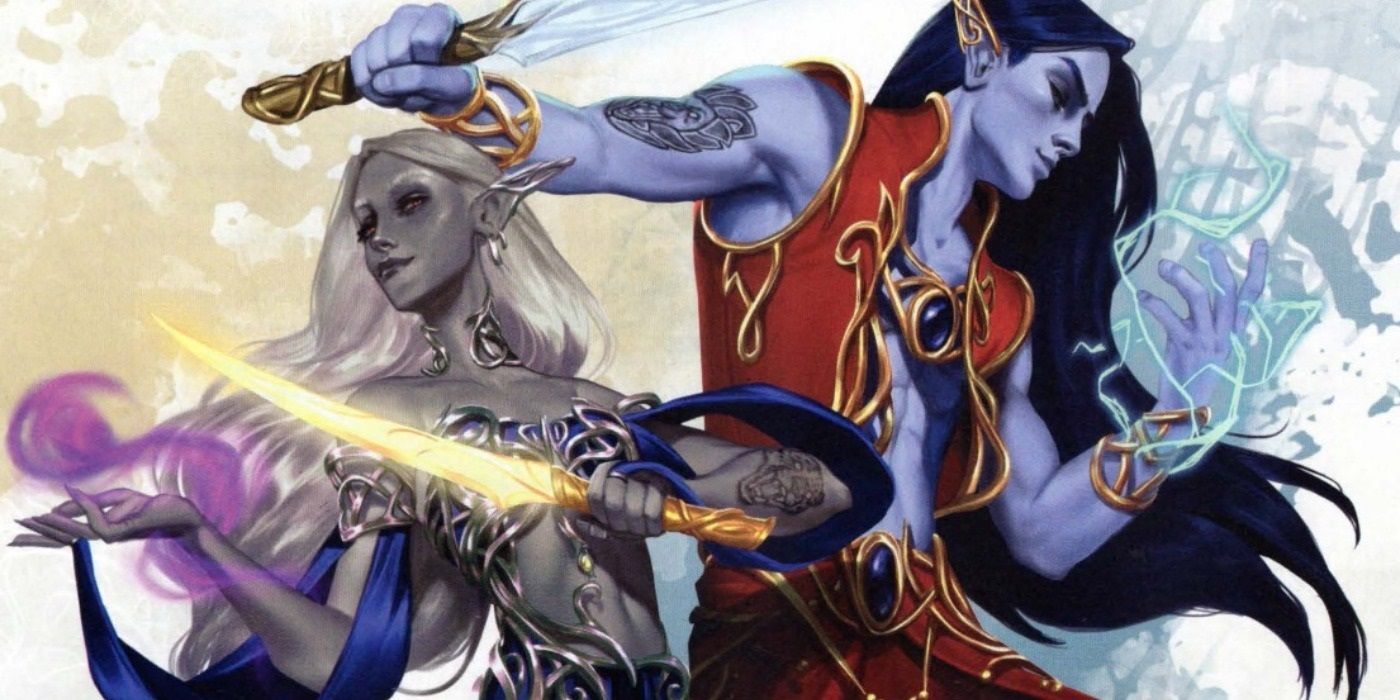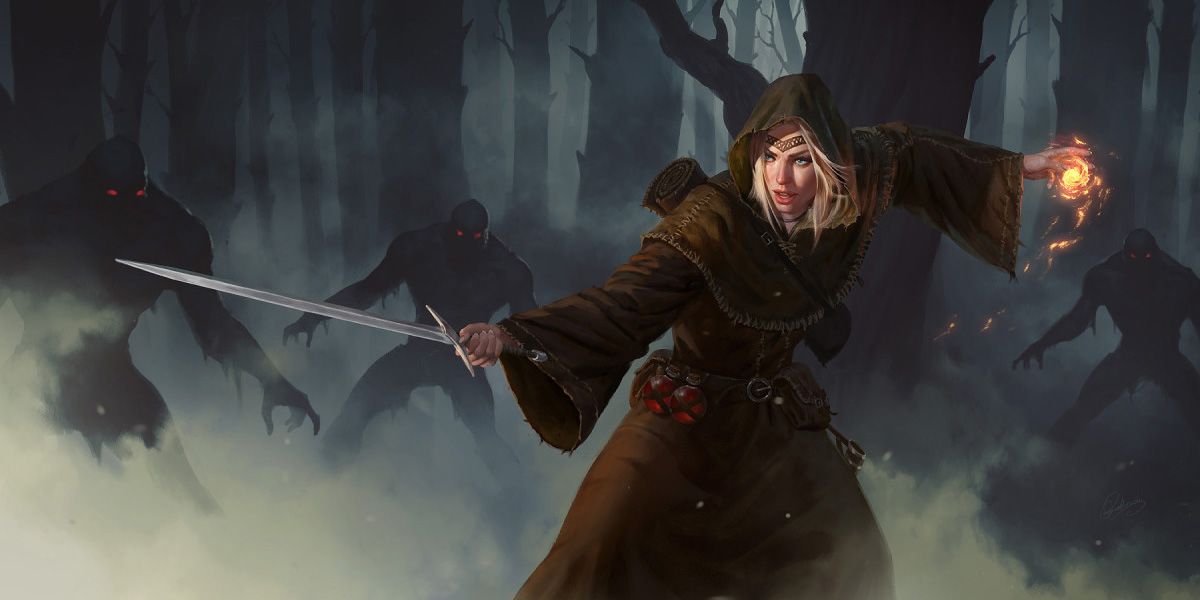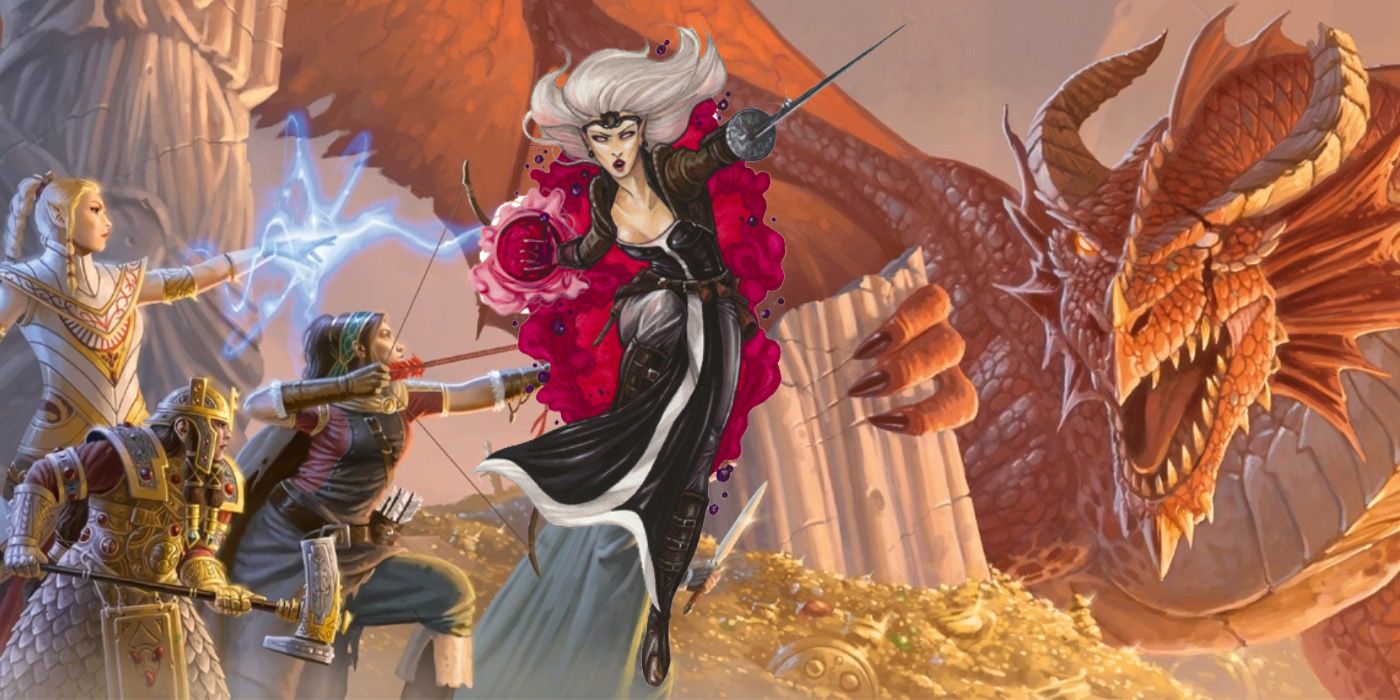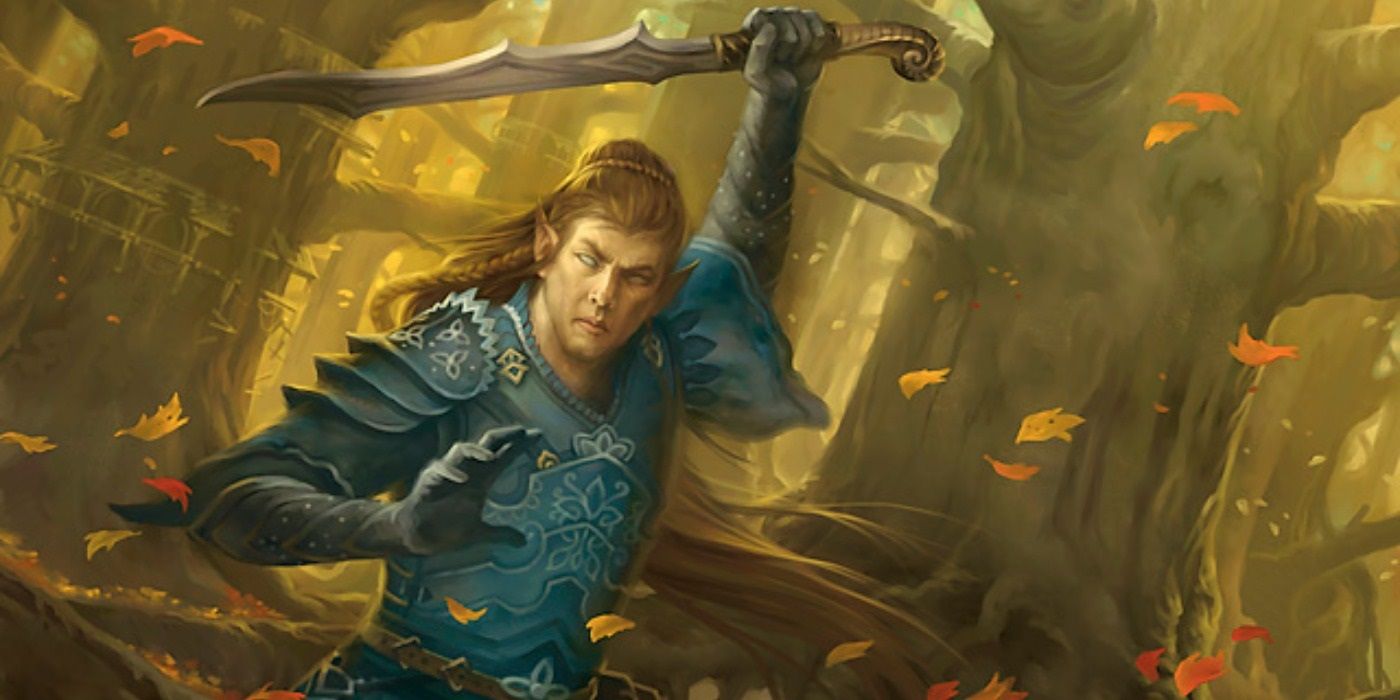The Bladesinger class in Dungeons & Dragons used to be one of the most broken in the game, due to how it mixed magic and swordplay into an unbeatable combination. Bladesingers have returned in Tasha's Cauldron of Everything, and its powers are far more in line with the other classes in the game.
In the old editions of D&D, physical combat and arcane spellcasting were considered two separate entities. The warriors had tons of hit points and were hard to hit, but their actions were limited to attacking things with weapons. The arcane casters in D&D couldn't fight their way out of a wet paper bag, but they could bend the laws of reality to their will. There were a few mixed options available, but their abilities were weakened as a result.
Advanced Dungeons & Dragons (the second edition of the game) introduced the Bladesingers, who turned magic and swordplay into an art form. They could dance and sing around the battlefield while slashing enemies and throwing out spells. It quickly became apparent that they were one of the best character options in the game, as they outpaced solo Fighters/Mages in their roles.
The First Bladesingers In D&D
The Complete Book of Elves for AD&D introduced what is widely considered to be one of the most overpowered classes in Dungeons & Dragons. In Advanced Dungeons & Dragons, the equivalent to subclasses were kits, which were specialized versions of existing classes, such as the Gladiator being a kit for the Fighter. The Bladesinger was a kit for Fighter/Mage multiclass characters, and it had the high entry requirement of 13 in Strength and Constitution, and 15 in both Dexterity and Intelligence. The Bladesinger gained a damage bonus with their chosen weapon and to performing special maneuvers, they could cast spells with one hand, they add half of their spellcasting level to their Armor Class while casting, and they can cast while wearing studded leather armor or Elven Chain.
Fighter and Mages in Advanced Dungeons & Dragons could also fight in Elven Chain, but it was extremely rare and generally considered high-level gear. This was a major detriment to this class combination, as they were still extremely vulnerable in combat. The Bladesingers' ability to fight in studded leather was a huge boost to their survivability on the battlefield.
In Advanced Dungeons & Dragons, Mages were extremely vulnerable, as anyone who was one-shotted by a kobold in Baldur's Gate can attest to. Their spell resources were also limited at low-levels, so even casting mage armor meant taking away a magic missile or sleep that could be needed later.
D&D Fighters tended to be extremely boring in terms of abilities, which is why kits were necessary to spice them up. Bladesingers were far more interesting to play than the standard versions of each class, as they were Fighters with the utility of Mages while retaining the ability to go toe-to-toe with monsters.
The Third Edition Bladesingers in Dungeons & Dragons
The Bladesingers returned in the third edition of D&D as a prestige class in Races of Faerun, with an upgraded version appearing in The Complete Warrior. Prestige classes were similar to the subclasses in the current version of the game, except that players normally don't reach them until level 6 or 7.
Bladesingers were restricted to elves and half-elves, and they were a fairly easy prestige class for Fighter/Wizards to take. The only problem was that the developers went a little too far in the other direction. Only half of the Bladesinger levels offered spellcasting progression, and the character is likely already missing some in order to nab the Feats necessary for taking on the class. They had a few decent abilities, but it took a while to reach them. The Bladesingers could become powerful in this edition of Dungeons & Dragons, but it took a long time to achieve this feat, especially compared to the original version of the class, which were strong out of the gate.
The New Bladesingers in D&D
The Bladesinger returned as a wizard subclass in Tasha's Cauldron of Everything. Wizards can take the Bladesinging Arcane Tradition at level 2. They no longer need to be elves or half-elves, nor are there any stat restrictions for taking the class.
The new Bladesingers aren't combat machines in the same way as the ones from Advanced Dungeons & Dragons. They are far more focused on their defensive capabilities, as they have light armor proficiency. When they activate their Bladesong, they add their Intelligence modifier to their Armor Class and Constitution checks to maintain concentration on spells, and they gain 10ft of movement speed. At level ten, they can use their reaction to burn spell slots to reduce damage.
There are a number of spellcasting hybrids in the Player's Handbook, with the Arcane Trickster and the Eldritch Knight offering magic to the physically-inclined classes. It's also a lot easier for spellcasters to fight in armor, so long as they're willing to spend feats for the privilege. In many ways, the Bladesinger is similar to its Advanced Dungeons & Dragons counterpart. What has changed is the game itself.
The elements that made the Bladesinger so special in the old days can now be accessed by other classes. A Bladesinger will have enhanced defense, but that comes at the loss of the unique abilities that belong to the other Arcane Traditions. An Abjurer with armor Feats can be more effective at keeping themselves and the party alive. The original Bladesingers were an exclusive club of badass elven warriors, from a time when they were held in higher regard than the other races in the game. The other classes couldn't keep up with the Bladesingers in AD&D, but now, they are the ones that have to work hard to stand alongside the existing spellcasters in Dungeons & Dragons.




